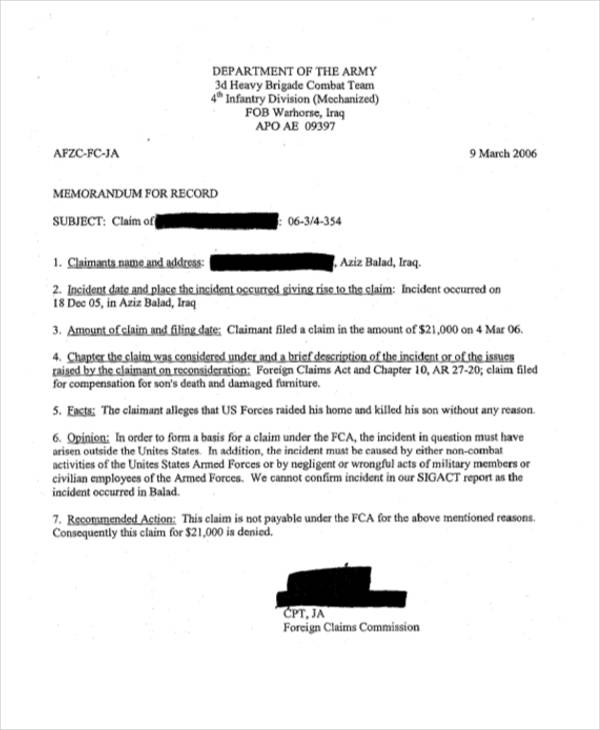| Look up cst in Wiktionary, the free dictionary. |
CST or Cst may refer to:
- Central Standard Time (CST) is six hours behind Coordinated Universal Time (UTC). During summer most of the zone uses daylight saving time (DST), and changes to Central Daylight Time (CDT) which is five hours behind UTC.
- Bid #21-14 Closing Date: March 11, 2021; Time: 2:00 PM CST, Buyer: Rhonda Williams 21-14 Complete.pdf 21-14 Addendum #1.pdf.
Time zones[edit]

- Central Standard Time, North America's Central Time Zone: UTC−06:00
- China Standard Time: UTC+08:00
- Cuba Standard Time: UTC−04:00
The information on this website, text and illustrations may only be reproduced with prior permission from CST. Community Security Trust is a registered charity in England and Wales (1042391) and Scotland (SC043612).
Government and politics[edit]
- Canada Social Transfer, an equalization payment
- Collective Security Treaty of the Commonwealth of Independent States
- Sandinista Workers' Centre (Spanish: Central Sandinista de Trabajadores), in Nicaragua
- Socialist Workers' Current (Portuguese: Corrente Socialista dos Trabalhadores), in Brazil
Health and medicine[edit]
- Cell Signaling Technology, an antibody development and production company
- Certified surgical technologist
- Contraction stress test in obstetrics
- Council for Science and Technology of the UK government
- CST complex, a protein trimer
Science and technology[edit]
- Cambridge Systems Technology, a defunct British computer peripherals company
- Centistokes (cSt), a unit of kinematic viscosity
- Certification for Sustainable Transportation, a program of the University of Vermont
- Common Spanning Tree, a networking technology
- Computer Simulation Technology, a maker of computational electromagnetics software
- Concrete Syntax Tree, a data structure for parsing expressions in an abstract language
- Constant strain triangle element, employed in finite element analysis
- Concentrated solar thermal power, see Concentrated solar power

Transportation[edit]
- Cargo Sous Terrain, a planned underground logistics system in Switzerland
- Stockholm Central Station (station code Cst)
- Chhatrapati Shivaji Terminus, formerly Victoria Terminus, in Mumbai, India
- Coast Air of Norway (ICAO designator CST)
- Cannon Street station in London, England
Other uses[edit]
- Center for Survivors of Torture, an American charity
- Cheng Shin Tire, the largest manufacturer of bicycle tires in the world
- Church of Spiritual Technology, a corporation of the Church of Scientology
- Civil Support Team in the United States
- Claremont School of Theology, in California
- Community Security Trust, a British human rights charity for the protection of British Jews
- Corrugated Steel Tape, a type of cable armor 'corrugated steel tape armoured cable'
| Central Time Zone | |
|---|---|
| time zone | |
| UTC offset | |
| CST | UTC−06:00 |
| CDT | UTC−05:00 |
| Current time | |
| 16:16, 14 March 2021 CST[refresh] 17:16, 14 March 2021 CDT[refresh] | |
| Observance of DST | |
| DST is observed in some of this time zone. | |

Arun Sharma Book For Cat Free Download
The North American Central Time Zone (CT) is a time zone in parts of Canada, the United States, Mexico, Central America, some Caribbean Islands, and part of the Eastern Pacific Ocean.
Central Standard Time (CST) is six hours behind Coordinated Universal Time (UTC). During summer most of the zone uses daylight saving time (DST), and changes to Central Daylight Time (CDT) which is five hours behind UTC.[1]
The largest city in the Central Time Zone is Mexico City; the Mexico City metropolitan area is the largest metropolitan area in the zone and North America.
Regions using (North American) Central Time[edit]
Canada[edit]
Hustle Cat Free Download
The province of Manitoba is the only province or territory in Canada that observes Central Time in all areas.
The following Canadian provinces and territories observe Central Time in the areas noted, while their other areas observe Eastern Time:
- Nunavut (territory): western areas (most of Kivalliq Region and part of Qikiqtaaluk Region)
- Ontario (province): a portion of the northwest bordering southeastern Manitoba, in and around Kenora.
Also, most of the province of Saskatchewan is on Central Standard Time year-round, never adjusting for Daylight Saving Time. Major exceptions include Lloydminster, a city situated on the boundary between Alberta and Saskatchewan. The city charter stipulates that it shall observe Mountain Time and DST, putting the community on the same time as all of Alberta, including the major cities of Calgary and Edmonton. As a result, during the summer, clocks in the entire province match those in Alberta, but during the winter, clocks in most of the province match those in Manitoba.
United States[edit]
Ten states are contained entirely in the Central Time Zone:
Five states are split between the Central Time Zone and the Mountain Time Zone:
- Kansas: all except for Sherman, Wallace, Greeley, and Hamilton counties
- Nebraska: eastern two thirds
- North Dakota: all except for southwest regions, south part of McKenzie County, and the majority of Dunn County and far western Sioux County
- South Dakota: eastern half
- Texas: all except for El Paso and Hudspeth counties
Five states are split between the Central Time Zone and the Eastern Time Zone:
Cst 2018 Free Download
- Florida: Florida Panhandle west of the Apalachicola River
- Indiana: northwest and southwest regions
- Kentucky: western half
- Michigan: Gogebic, Iron, Dickinson, and Menominee counties
- Tennessee: West Tennessee and Middle Tennessee
Additionally, Phenix City, Alabama, and several nearby communities in Russell County, Alabama, unofficially observe Eastern Time. This is due to their close proximity to Columbus, Georgia, which is on Eastern Time.
Mexico[edit]
Most of Mexico—roughly the eastern three-fourths—lies in the Central Time Zone, except for six northwestern states (Baja California, Baja California Sur, Chihuahua, Sinaloa, Sonora, and most of Nayarit) and one southeastern state (Quintana Roo).
The federal entities of Mexico that observe Central Time:
- Colima – except for the Revillagigedo Islands, in which the inner islands use Mountain Time and the outer island uses Pacific Time
- Nayarit – *only the municipality of Bahía de Banderas, rest of the state uses Mountain Time
Central America[edit]
Belize, Costa Rica, El Salvador, Guatemala, Honduras, and Nicaragua all use Central Standard Time year-round.
Eastern Pacific islands and other areas[edit]
The Galápagos Islands in Ecuador uses Central Standard Time all year-round; the remainder of Ecuador uses Eastern Standard Time. Both Easter Island and Salas y Gómez Island in Chile uses Central Standard Time during the Southern Hemisphere winter and Central Daylight Time during the Southern Hemisphere summer; the remainder of Chile uses Atlantic Standard Time and Atlantic Daylight Time.
Central Daylight Time[edit]
Daylight saving time (DST) is in effect in much of the Central time zone between mid-March and early November. The modified time is called 'Central Daylight Time' (CDT) and is UTC−05:00. In Canada, Saskatchewan does not observe a time change. One reason for Saskatchewan's lack of a time change is that, geographically, the entire province is closer to the Mountain Time Zone's meridian. The province elected to move onto 'permanent' daylight saving by being part of the Central Time Zone. The only exception is the region immediately surrounding the Saskatchewan side of the bi-provincial city of Lloydminster, which has chosen to use Mountain Time with DST, synchronizing its clocks with those of Alberta.
In those areas of the Canadian and American time zones that observe DST, beginning in 2007, the local time changes at 02:00 local standard time to 03:00 local daylight time on the second Sunday in March and returns at 02:00 local daylight time to 01:00 local standard time on the first Sunday in November. Mexico decided not to go along with this change and observes their horario de verano from the first Sunday in April to the last Sunday in October. In December 2009, the Mexican Congress allowed ten border cities, eight of which are in states that observe Central Time, to adopt the U.S. daylight time schedule effective in 2010.
Alphabetical list of major Central Time Zone metropolitan areas[edit]
|
|
|
See also[edit]
References[edit]
- ^'Central Time (CST/CDT) | GMT'. greenwichmeantime.com. Retrieved 2020-05-22.
External links[edit]
Time zones in North America | ||
|---|---|---|
| Time zone | Hours from UTC: Standard time | Hours from UTC: Daylight saving time |
| Hawaii–Aleutian (in Hawaii) | −10 | −10 |
| Hawaii–Aleutian (in Alaska) | −10 | −9 |
| Alaska | −9 | −8 |
| Pacific (in Alaska) | −8 | −8 |
| Pacific (other states/provinces) | −8 | −7 |
| Mountain (Arizona, Sonora, and Northeastern British Columbia only) | −7 | −7 |
| Mountain (other states/provinces) | −7 | −6 |
| Saskatchewan | −6 | −6 |
| Central (other states/provinces) | −6 | −5 |
| Eastern (parts of Nunavut and the Caribbean) | −5 | −5 |
| Eastern (other states/provinces) | −5 | −4 |
| Atlantic (Natashquan River) | −4 | −4 |
| Atlantic (other states/provinces) | −4 | −3 |
| Newfoundland | −3:30 | −2:30 |
| Saint Pierre and Miquelon and most of Greenland | −3 | −2 |
| ||